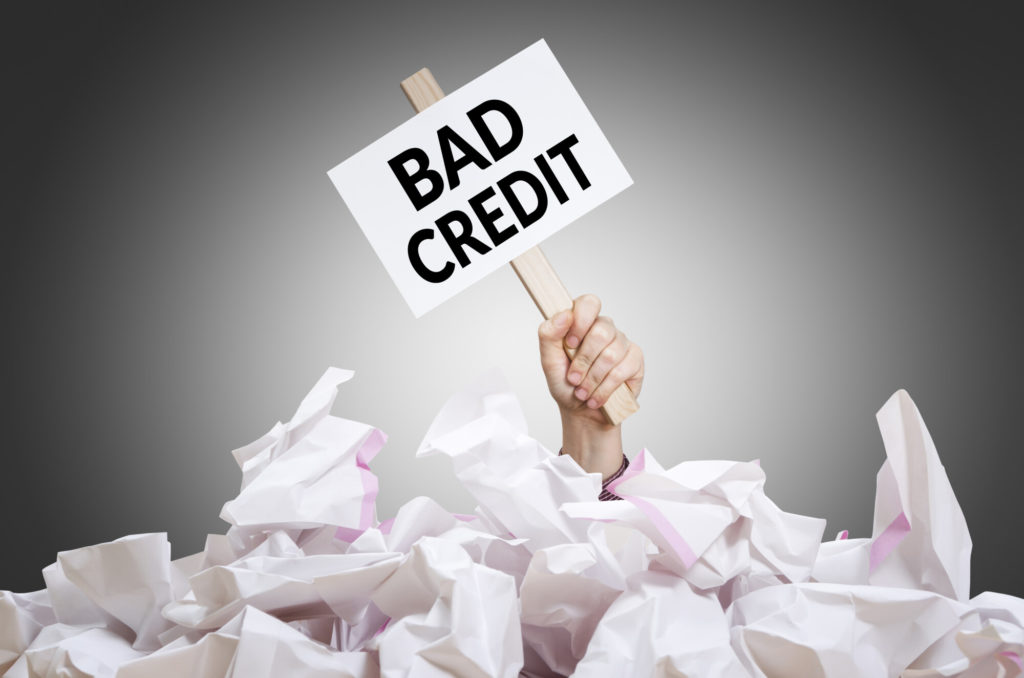
Most people strive to pay their bills on time and in full. Yet, disaster can strike. You can lose your job or simply overextend yourself. When that happens, digging out of the hole can range from difficult to outright impossible.
Reasons like those are why nearly 400,000 people filed for bankruptcy in 2021 alone. Yet, even when bankruptcy might provide much-needed relief, many people hesitate out of fear of damage to their credit score.
The good news is that rebuilding credit after bankruptcy is both possible and relatively straightforward. Read this guide for tips on how to rebuild credit after your bankruptcy.
What Is Bankruptcy?
In basic terms, bankruptcy is a legal process that lets a person or business discharge debts they cannot pay. At the same time, creditors get an opportunity to reclaim a portion of the debts owed.
For your part, your assets get evaluated and sold off to help pay outstanding debts. There are exempt assets and non-exempt assets.
Non-exempt assets include things like stocks, cash, valuable collections, heirlooms, extra vehicles, and real estate other than your home. Exempt assets include items such as trade tools, household appliances, most clothing, pensions, and a certain amount of jewelry.
Importantly, the goal of bankruptcy is debt relief, not to leave you penniless and without possessions. Up to a certain value, you can hang on to your personal belongings.
Conversely, bankruptcy also does some things for you, such as stopping collection calls and avoiding lawsuits.
Your Credit Score After Bankruptcy
People who worry that their credit score will suffer post-bankruptcy have a legitimate concern. Your credit score will take a major and unavoidable hit. In fact, a credit score can drop as much as 200 points after your bankruptcy.
The good news is that bankruptcy is not a permanent stain on your credit. Bankruptcy information stays on your credit report for 10 years, but it doesn’t automatically disqualify you from getting any kind of credit ever again. It won’t keep your credit score down forever, either.
As your bankruptcy gets older, the less impact it has on your overall credit score. It won’t completely undermine your ability to get lines of credit down the road for important purchases, such as mortgages or car loans.
The big takeaway is that you can do a lot to fix your credit after bankruptcy. That starts with understanding how your credit score works.
Understanding Your Credit Score
Your credit score is essentially a rating that credit bureaus give you in the form of a three-digit number somewhere between 300 and 850. The lower your score, the worse the rating the credit bureau gave you. In practice, creditors use that number as a signal about your likeliness to pay debts.
The credit bureaus base that rating on some key areas, including:
- Payment history
- Total debt
- How long you’ve had credit
- Credit mix
- Recent credit activity
The credit bureaus give these factors weights when calculating your score.
Payment history, meaning how often you make on-time payments, makes up around 35 percent of the score. Your total debt and credit utilization account for around 30 percent of the score. Recent credit activity, by contrast, only accounts for around 10 percent.
Now that you have a sense of what makes up your credit score, let’s look at how to rebuild credit.
Check Your Credit Report
You can think of your credit report as something of a report card about your credit activity. It details things like how much you owe, as well as who holds that account.
After the bankruptcy, you shouldn’t find any surprises in that report. Yet, you may still find inaccurate information. Those inaccuracies, such as debts you don’t owe, can drag your score down. You can request that the credit bureaus remove inaccurate entries from your report.
Removing inaccuracies can help bring your credit score up a little. Monitoring your credit report once a year is also a good way to ensure that your bankruptcy information goes away after 10 years. It should happen automatically, but it doesn’t hurt you to double-check.
Make a Budget
Poor financial habits can lead you into the same kind of financial mess that bankruptcy should help you solve. Get ahead of potential problems by making a budget. There are several budgeting systems you can use, such as:
- 50/30/20 budget
- Envelope budget
- Zero-based budget
- Pay yourself first budget
The envelope and zero-based budget work well for people who need a very rigid system to keep their spending in check. The 50/30/20 budget works well for people who just need a basic guide to allocate their funds. The pay yourself first budget works best for those who need help with saving money for the future.
Budgeting apps can also prove helpful in setting up and keeping a budget moving forward. The real value in a budget is that it makes you think about your expenses and income. Confronting those financial realities alone can make you rework how you treat your personal finances.
Pay Your Bills on Time
The big upside of a bankruptcy is that it sweeps most of your debts off the table. A lot of monthly payments should evaporate as a result of that. It gives you an opportunity to get on track with your remaining bills and stay that way.
Building out a history of on-time payments will go a long way toward rebuilding your credit score. Given how much weight credit bureaus put on that particular factor, it’s worth the time and effort to get that payment history percentage as close to 100 percent as possible.
Limit Credit Card Use
Assuming any of your credit cards survived your bankruptcy, they’re a source of temptation to live beyond your means. You must strictly limit their use.
Credit bureaus like to see credit card usage that doesn’t exceed around 30 percent of your total credit line. The better you do at keeping your balance to that 30 percent or less mark, the faster your credit score will rise.
Get a Secured Credit Card
Despite the temptation a credit card creates, having a credit card is generally better for your credit score than not having one. If all of your credit cards were wiped out in the bankruptcy, consider a secured credit card.
Getting a secured card means that you make a deposit with the credit card company. They issue a credit card. In most cases, they issue you a card in the amount of your deposit.
A secured card is a bit like getting a loan with collateral. If you don’t pay the bill, the deposit guarantees the credit card company gets back the principal. Depending on the card you get, some may increase your credit line after a certain number of on-time payments.
The account will also show up on your credit report, which will improve your credit mix and payment history.
Authorized User
Another way you can improve your credit score is if someone will let you become an authorized user on their credit card. The way it works is that someone with good credit adds you to their credit card account. The credit card company issues a card in your name.
Here’s the good part. Neither you nor the other person has to change anything. You get a credit score boost as a benefit for their good financial habits.
While the credit card company may issue you a card, it doesn’t mean you should hang on to it. This holds particularly true if you struggle with overspending. You should discuss with the account holder what to do with the physical card.
You can, for example, give them the card after you get it. You could also get together and destroy the card to remove temptation.
Loans
Depending on how long you wait after the bankruptcy, there are a couple of potential loan options available to you. One option is a credit builder loan.
For instance, with a credit builder loan, a bank gives you a loan and keeps the money. You make monthly payments on the loan. When you make the last payment, the bank gives you money from the loan. It’s a way to demonstrate that you can make responsible payments.
If you’ve already done some credit repair work for a while, you can also look into small car loans. While most new cars will remain out of reach, you can conceivably get a loan for a less expensive used car.
You will likely face higher interest rates, but it’s another way you can expand your credit mix and demonstrate good payment habits.
Rebuilding Credit After Bankruptcy Is Possible And Easier Than You Think
While bankruptcy may sound like an eternal kiss of death for your credit, it’s not quite that grim. In fact, rebuilding credit after bankruptcy is both possible and practical.
However, you must start with your own finances, though, and get a budget in order. That’s the best way to understand how much credit you can afford. Once you know, you can look into options like secured credit cards, becoming an authorized user, and credit builder loans.
Talk To An Experienced Bankruptcy Attorney In Denver, Colorado
If you need help, Colorado Bankruptcy Law Group specializes in helping individuals with their bankruptcies. To schedule a consultation, contact Colorado Bankruptcy Law Group today.
Check out our client reviews on Google, Facebook, and Avvo!


